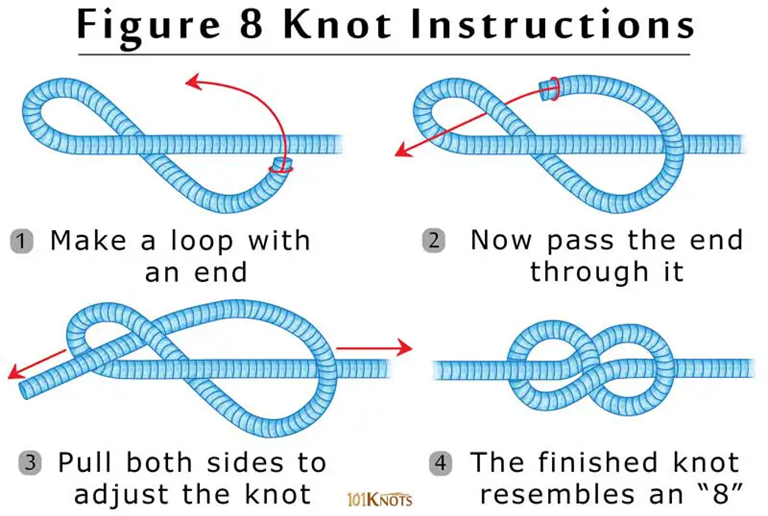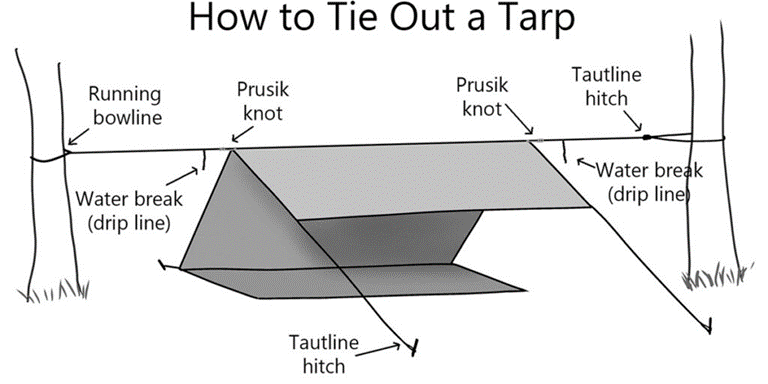Knot Basic
I. Knot Terminology |
II. Rope Materials |
III. Seal the Ends of the Cut Rope |
IV. Square Knot |
V. Bowline |
VI. Fisherman Knot |
VII. Sheet Bend |
VIII. Clove Hitch |
IX. Taut Line Hitch |
X. Running Knot (Slip Knot) |
XI. Sheepshank Knot |
XII. Figure Eight Knot
Old Knot Basics document
Old Knot Basics document
Whether you're boating, camping, climbing, fishing, hauling, sailing, or doing work around the house or yard, knowing a few strong, secure, and easy-to-untie knots can make the job much easier.
- Knot: A fastening made by tying together lengths of material, such as rope, in a prescribed way.
- Bends: Used to tie a rope to another rope
- Hitches: Used to tie a rope to an object other than another rope
I. Knot Terminology ( | )
To start, it helps to know some basic knot terminology.
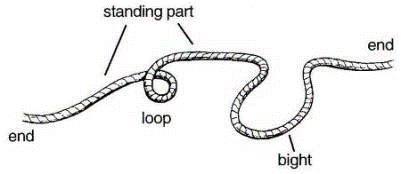

- Line: The rope or cord in which a knot is being tied.
- Working end: The end of the line used to tie the knot.
- Standing end: The end of the line not used to tie the knot (this end is often left out of images that show how to tie a knot).
- Standing part: The section of line between the knot and the standing end.
- Bight: A stretch of line formed into a "U" or semicircle that does not cross itself (some knots can be tied using the bight of a rope rather than the ends; these knots are said to be tied in the bight).
- Loop: A closed section of line, formed when the working end of the rope passes over itself.
II. Rope Materials ( | | )
Ropes can be made from natural fibers, such as hemp, or from synthetic fibers, such as nylon, polyester, and polypropylene. The material from which a rope is made affects the rope's characteristics and best uses.
- Natural fibers: Natural fibers, such as hemp, are usually found in laid rope. They're cheap, easy to handle, and, due to their slight roughness, are good at holding knots. Natural fibers are UV-resistant but tend to rot or mildew if wet. Oils and solvents can also damage them. Overall, they're not as strong as ropes made from synthetic materials.
- Nylon: Strong, light, and elastic, nylon can make everything from thick ropes to skinny fishing lines. Nylon ropes can be dynamic or static, depending on how the nylon is woven. Nylon sinks in water and loses some strength when wet. It's also vulnerable to acids and UV light.
- Polyester: Not as strong or elastic as nylon, polyester ropes are generally static. Polyester sinks in water. doesn't lose its strength when wet, and is more resistant to UV rays than nylon.
- Polypropylene: Ropes made from polypropylene float on water. making them perfect for waterskiing and water rescue. They're also water-resistant and won't freeze in cold weather. However, polypropylene ropes are stiff and tend to fail when exposed to high heat or excessive UV rays.
III. Seal the Ends of the Cut Rope ( | | )
If you cut a rope, always seal the ends to prevent fraying. You can seal the ends of a rope in several ways:
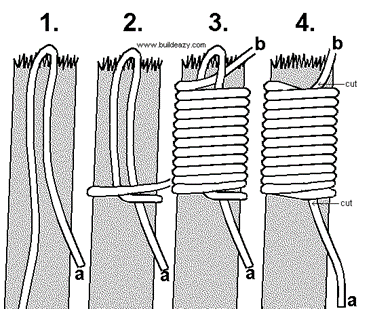
- Binding: Apply masking or duct tape to the rope ends.
- Waxing: Drip melted wax thoroughly on the rope ends to seal them.
- Melting: With nylon ropes, you can seal the ends by melting the nylon fibers with direct heat from a match.
- Whipping: Use twine to bind and seal the rope ends. To apply whipping to the end of a rope:
- lay the end of the twine along the rope end so that the bight of the twine is near the rope end.
- Wrap the twine tightly around the rope and slip the end of the twine through the bight.
- Tighten and snip off both ends of the twine.

IV. Square Knot ( | | )
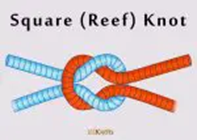
A very simple binding knot, the square knot was traditionally used to tie up a reef (sail) - so it is often called a reef knot. It is one of small number of knots that most people know of, but it is often tied and used incorrectly. Square knot only as the binding knot. It must not be used to join two lengths of rope since it can easily come undone.
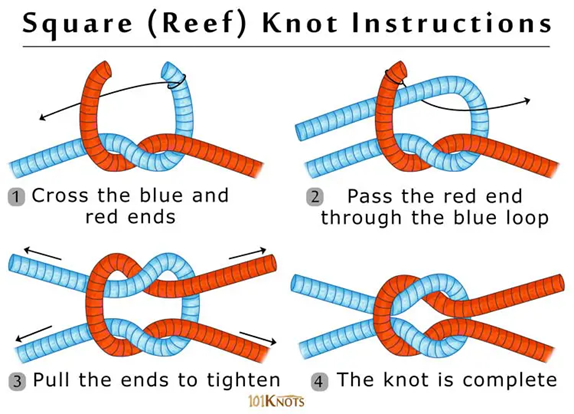
V. Bowline ( | | )
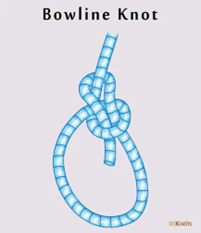
The bowline forms a loop that will not slip. That’s just what you want for tying a rope around your waist or around someone requiring rescue. A bowline also works well for securing guy lines through the grommets on a tent or dining fly.
Learn to tie the bowline around yourself, around a post, and in the free end of a rope.
With practice, you can even tie it with one hand.
- Step 1: Make a small overhand loop in the standing part of a rope.
- Step 2: Bring the rope end up through the loop, around behind the standing part, and back down into the loop.
- Step 3: Tighten the bowline by pulling the standing part of the rope away from the loop.
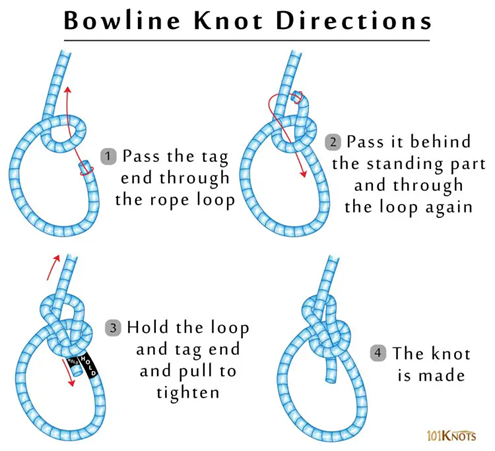
VI. Fisherman Knot ( | | )
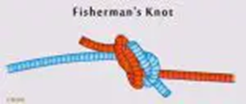
The fisherman's, or anchor, bend is an especially strong and simple knot that will not jam or slip under strain and can be untied easily. The knot is used to attach a rope to a ring, hook, anchor, or other object. The fisherman's knot is a bend with a symmetrical structure consisting of two overhand knots, each tied around the standing part of the other.
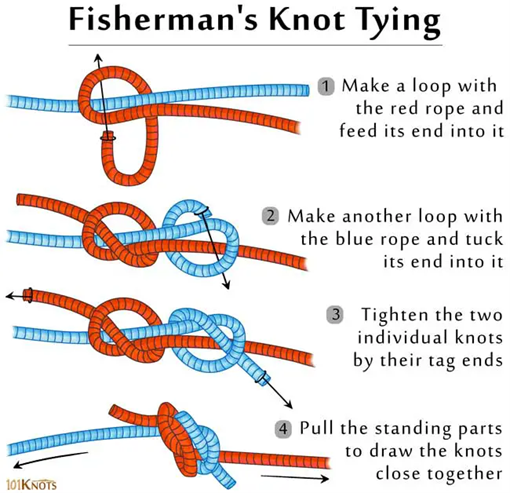
VII. Sheet Bend ( | | )

The sheet bend, or weaver's knot, is widely used by sailors for uniting two ropes of different sizes. The end of one rope is passed through a loop of the other, is passed around the loop, and under its own standing part.
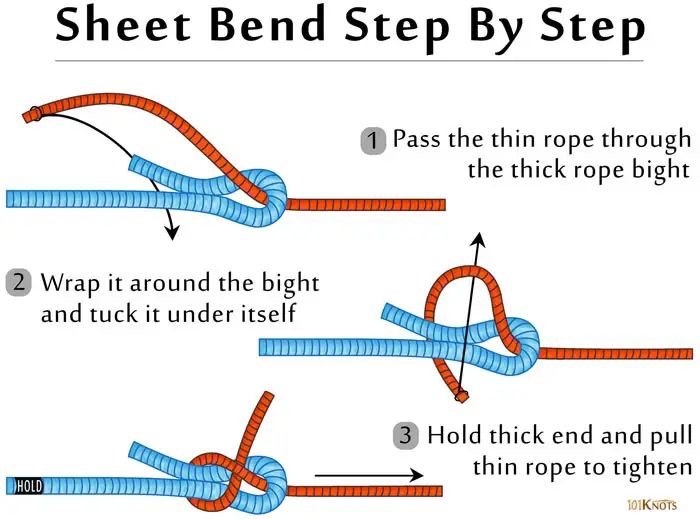
VIII. Clove Hitch ( | | )
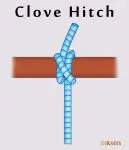
The clove hitch is a simple, essential, quickly tied, adjustable, strong alpine wunder-knot! This hitch is commonly used in mountaineering for fixing a rope to a carabiner, securing yourself to an anchor, or multitude other times when you need to secure a rope quickly.
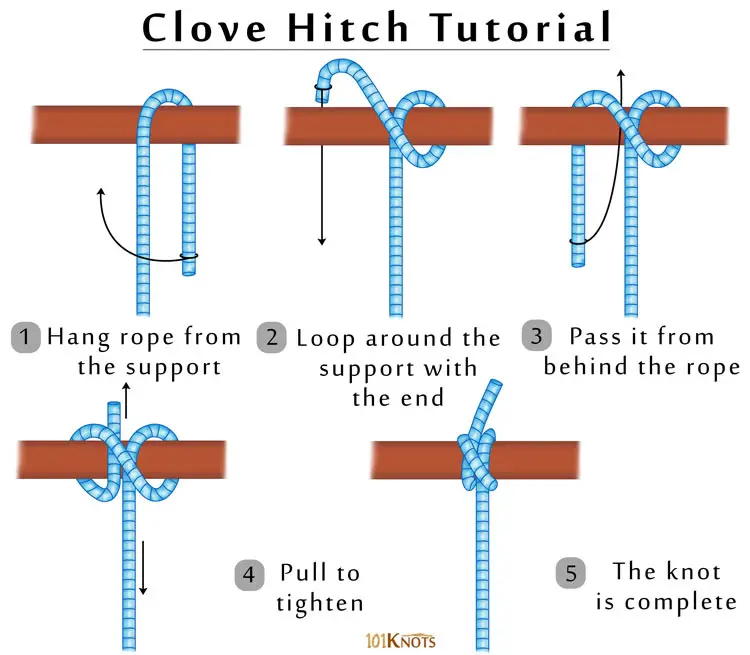
IX. Taut Line Hitch ( | | )
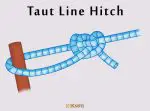
It is typically used for securing tent lines in outdoor activities involving camping, by arborists when climbing trees, for tying down aircraft, for creating adjustable moorings in tidal areas, and to secure loads on vehicles.
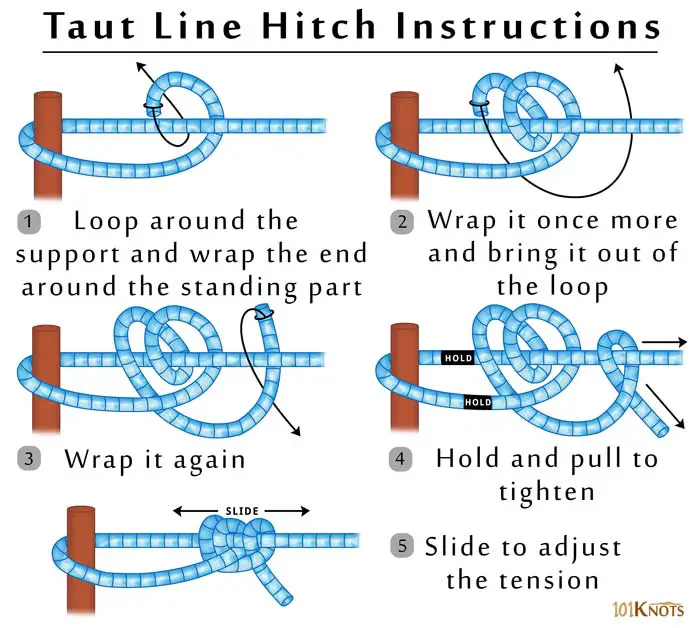
X. Running Knot (Slip Knot) ( | | )

There are many methods employed for attaching bridles to kites; one can tie the line around a leading edge connector, tie it around the spar, under or over the fixing, perhaps also with a stopper, use a loop, use a loose end, or configure it in any other way you see fit.
The slip knot is related to the running knot, which will be released when the standing end is pulled. Both knots are identical and are composed of a slipped overhand knot, where a bight allows the knot to be released by pulling on an end; the working end for a slip knot, and the standing end for a running knot.
The slip knot is related to the running knot, which will be released when the standing end is pulled. Both knots are identical and are composed of a slipped overhand knot, where a bight allows the knot to be released by pulling on an end; the working end for a slip knot, and the standing end for a running knot.

XI. Sheepshank Knot ( | | )

The sheepshank is a simple knot useful for temporarily shortening a rope. It is made by making a double loop in the rope and tying a half hitch at each end. It can be used to strengthen a rope at its weak point by placing the weak part in the middle between the two loops. The sheepshank will hold only while there is a strain on the knot to keep the half hitches taut. It can be secured either by slipping an object through each end of the loop or by an overhand knot tied over each loop.
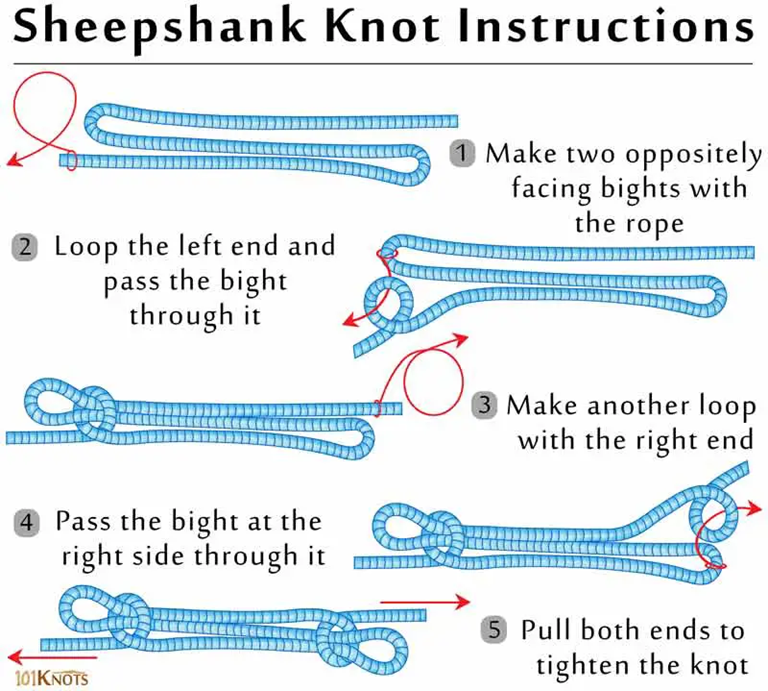
XII. Figure-Eight Knot ( | )

A figure-eight knot is a type of stopper knot, meaning that it is often used to prevent hauling or rock-climbing ropes from slipping through a narrow hole, retaining device, or carabiner. Figure-eights are strong and there are a variety of ways to tie them for both single and double strands of rope.
